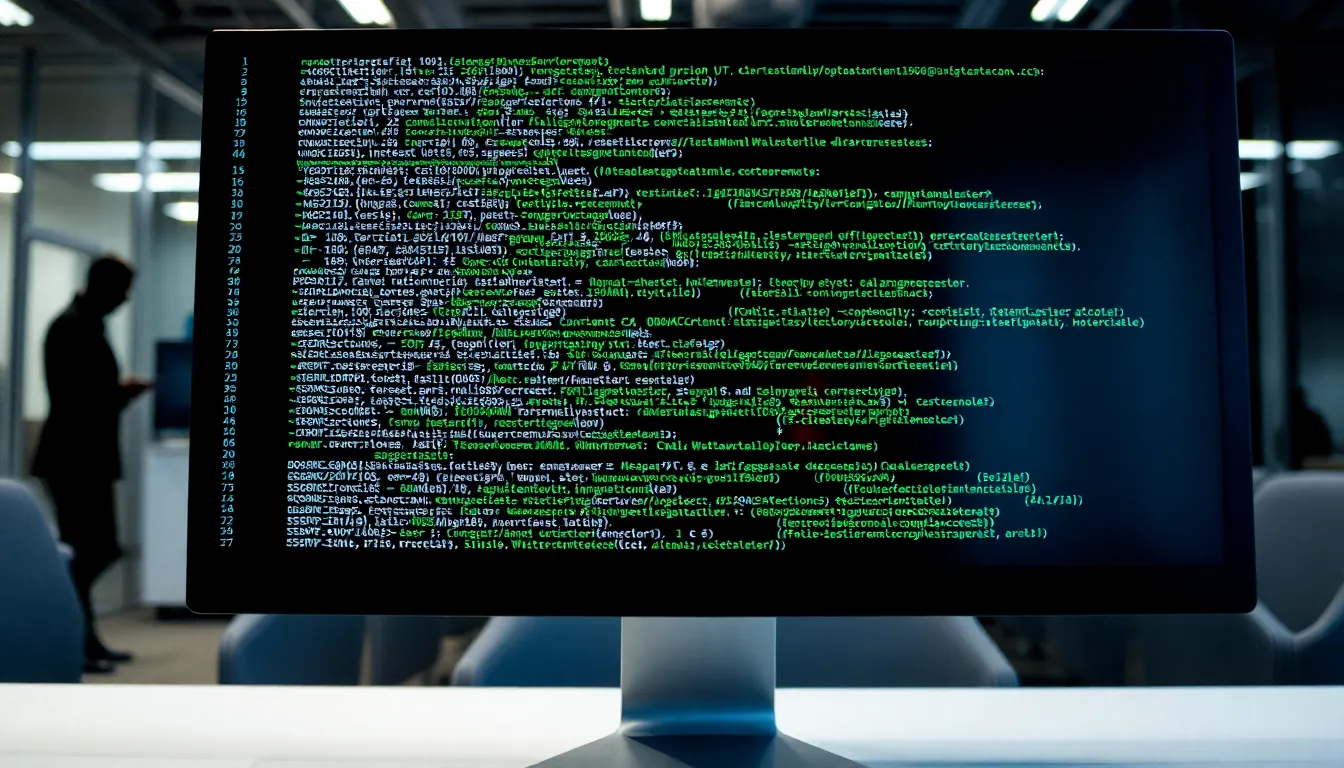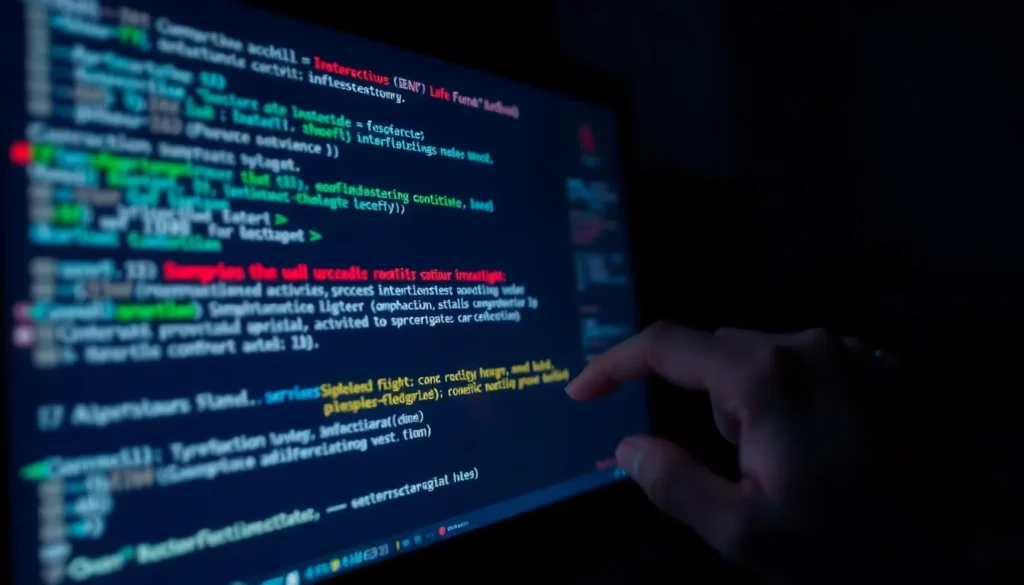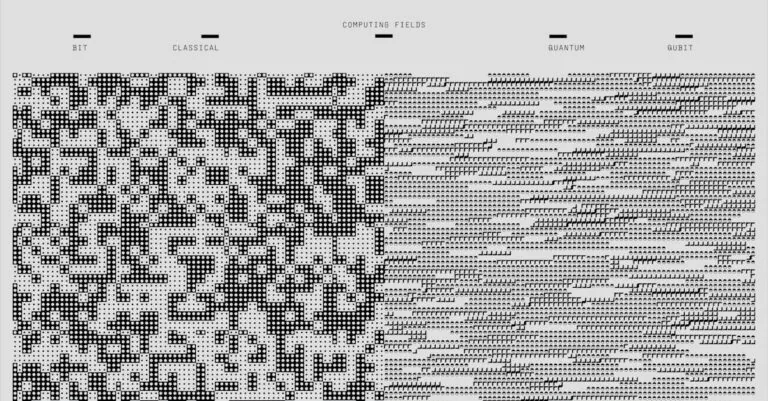In the wild world of cybersecurity, rootkits lurk like sneaky ninjas, ready to pounce on unsuspecting systems. These stealthy little devils can turn a perfectly innocent computer into a playground for cybercriminals. Imagine a burglar slipping into your home while you’re binge-watching your favorite show—rootkits do just that, but in the digital realm.
Rootkits are designed to hide their presence, making them the ultimate stealth threat. They can manipulate system functions, steal sensitive data, and even create backdoors for future attacks. Understanding rootkits is crucial for anyone who values their digital safety. So buckle up and get ready to dive into the mysterious world of rootkits, where knowledge is your best defense against these crafty intruders.
Table of Contents
ToggleUnderstanding Rootkits
Rootkits pose serious threats in the realm of cybersecurity. They allow cybercriminals to hide malicious activities while maintaining control over compromised systems.
Definition and Purpose
A rootkit is a collection of software tools designed to enable unauthorized access to a computer while hiding its existence. By disguising themselves, rootkits conceal their activities from users and security measures. Their primary purpose involves manipulating system functions to activate malicious software, steal sensitive information, or establish backdoors for future attacks. Understanding rootkits is vital for recognizing risks and implementing effective defenses against them.
Types of Rootkits
Several types of rootkits exist, each with distinct characteristics. User-mode rootkits operate at the application level, affecting user-installed software. Kernel-mode rootkits function at a deeper level, targeting the operating system’s core, making them harder to detect. Bootkits take control even before the operating system loads, compromising the system’s boot process. Memory rootkits manipulate running processes and data in memory for stealthier operations. Understanding these types is crucial for identifying various rootkit threats and effectively securing systems against them.
How Rootkits Work

Rootkits operate stealthily within systems, enabling unauthorized access while remaining undetected. Understanding how they install themselves and maintain persistence is crucial for effective defense.
Installation Techniques
Rootkits utilize various installation techniques to infiltrate systems. Common methods include software vulnerabilities, malicious attachments, and social engineering tactics. They often disguise themselves as legitimate applications, making detection difficult. Exploiting security gaps allows them to gain elevated privileges, securing a foothold in the system. Users may unknowingly install rootkits when they download compromised software or open infected files. Recognizing these techniques empowers individuals and organizations to adopt safer browsing habits and avoid suspicious downloads.
Persistence Mechanisms
Rootkits employ persistence mechanisms to maintain access even after system reboots. They often modify system files and registry entries, ensuring reactivation during startup. Processes may be hidden from security tools, enabling continued operation. Some rootkits insert themselves into kernel mode, allowing deeper integration with the operating system. This integration complicates detection and removal efforts. Employing various strategies, rootkits can survive system updates and antivirus scans, illustrating the necessity for robust security measures. Being aware of these strategies can help users implement stronger defenses against rootkit attacks.
Detecting Rootkits
Detecting rootkits involves recognizing their subtle signs and utilizing effective tools. Vigilance and the right strategies provide a pathway for identifying these threats.
Signs of Infection
Common signs of rootkit infection include system performance issues and suspicious network activity. Users might notice unexpected crashes, unresponsive applications, or unusual error messages. Increased CPU usage without apparent cause often indicates hidden processes at work. Other symptoms can include unauthorized changes to system settings or files. Promptly identifying these signs enhances the likelihood of successful remediation efforts.
Tools and Methods for Detection
Various tools and methods aid in rootkit detection. Antivirus solutions frequently include features for identifying rootkits along with other malware. Specialized rootkit scanners like chkrootkit and rkhunter effectively scan for these threats. Utilizing system monitoring tools also proves beneficial; they track processes and highlight anomalies. Behavior-based detection systems assess changes in system behavior, providing insights into potential infections. Regular system audits and integrity checks can bolster early detection capabilities.
Preventing Rootkit Attacks
Preventing rootkit attacks requires a proactive approach. Implementing best practices strengthens system defenses significantly.
Best Practices for Security
Employing a multi-layered security strategy mitigates risks effectively. Utilize firewalls to monitor incoming and outgoing traffic. Implement strong passwords, mixing letters, numbers, and symbols. Educating users about phishing attempts raises awareness and reduces vulnerability. Regularly backing up data ensures recovery in case of an infection. Additionally, using encryption for sensitive files protects against unauthorized access.
Importance of Regular Updates
Regular updates play a crucial role in preventing rootkit infections. Keeping operating systems patched addresses known vulnerabilities. Update software and applications to ensure robust security features remain active. Enabling automatic updates simplifies the process, reducing the likelihood of missing critical patches. Security patches released by vendors often contain fixes for exploitation techniques targeting rootkits. Using updated antivirus solutions enhances your system’s ability to detect and neutralize emerging threats.
Rootkits pose a serious challenge in the realm of cybersecurity. Their ability to operate undetected makes them particularly dangerous. By understanding how rootkits function and recognizing the signs of infection, users can take proactive steps to safeguard their systems. Implementing a comprehensive security strategy is essential for preventing these stealthy intrusions. Regular updates and user education play a crucial role in enhancing defenses. Staying vigilant and informed about rootkits can significantly reduce the risk of falling victim to these covert threats. Prioritizing digital safety is not just wise; it’s necessary in today’s interconnected world.






